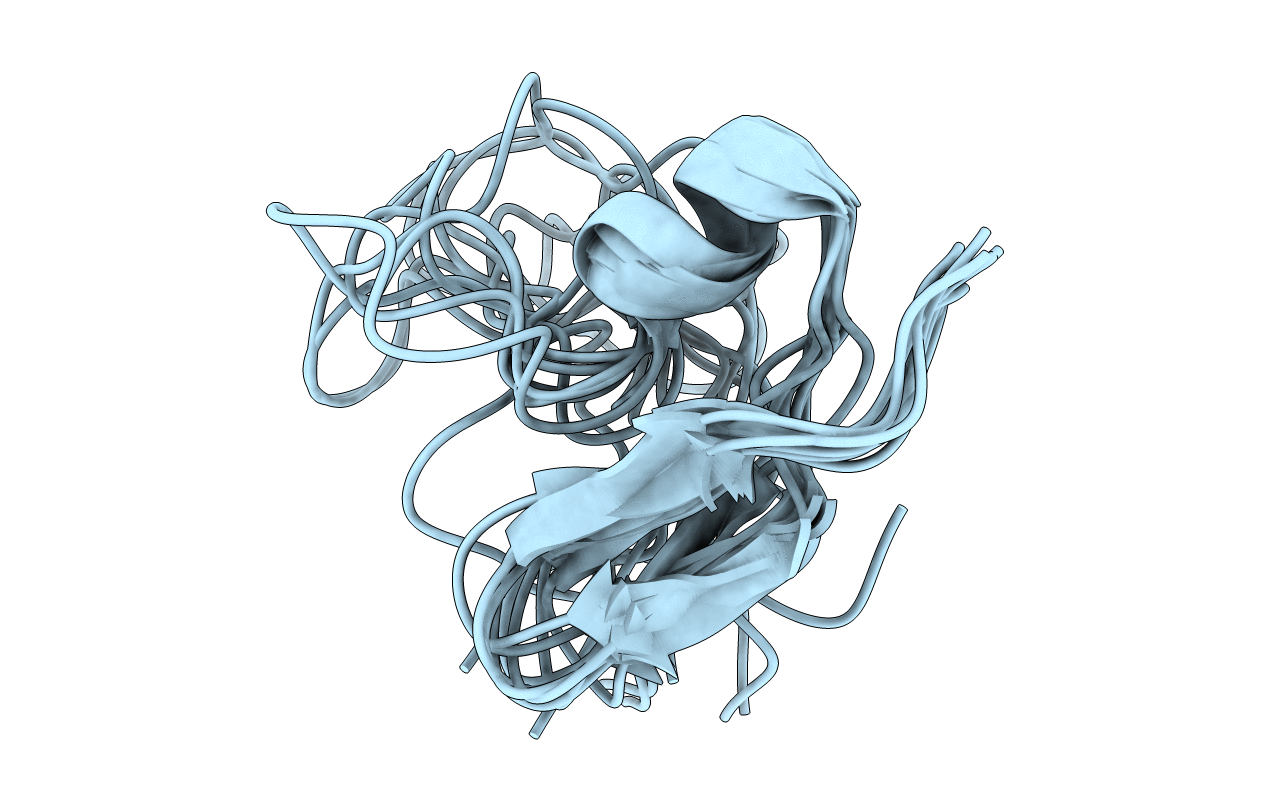
Deposition Date
2006-11-22
Release Date
2007-11-13
Last Version Date
2024-10-30
Entry Detail
PDB ID:
2E3E
Keywords:
Title:
NMR structure of DEF-BBB, a mutant of anopheles defensin DEF-AAA
Biological Source:
Source Organism:
Anopheles gambiae (Taxon ID: 7165)
Host Organism:
Method Details:
Experimental Method:
Conformers Calculated:
100
Conformers Submitted:
9
Selection Criteria:
structures with the lowest energy and the least restraint violations


